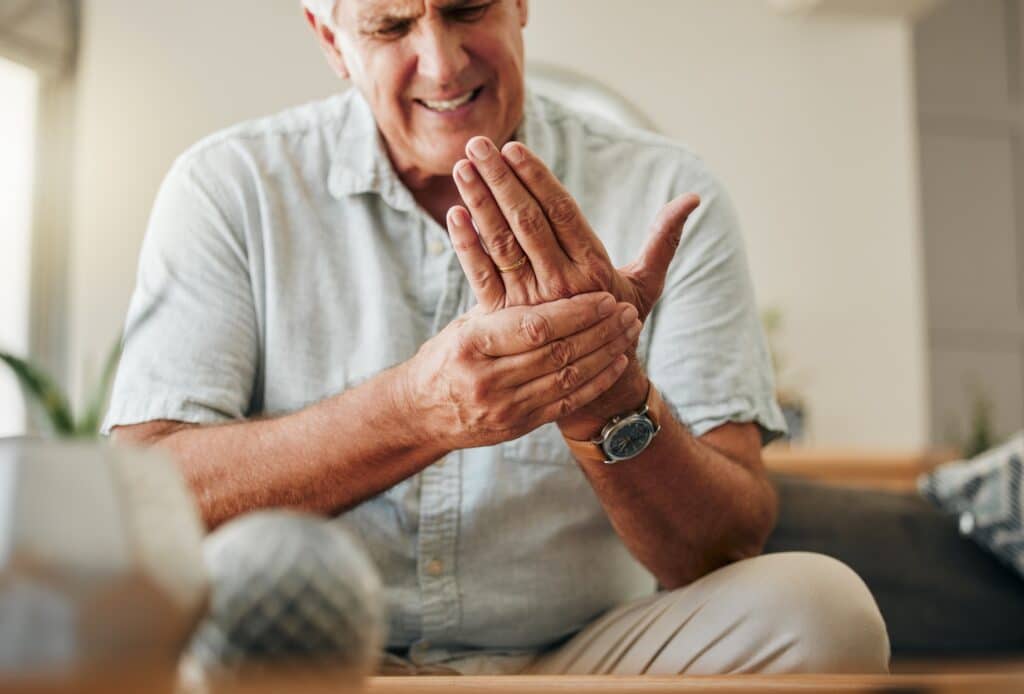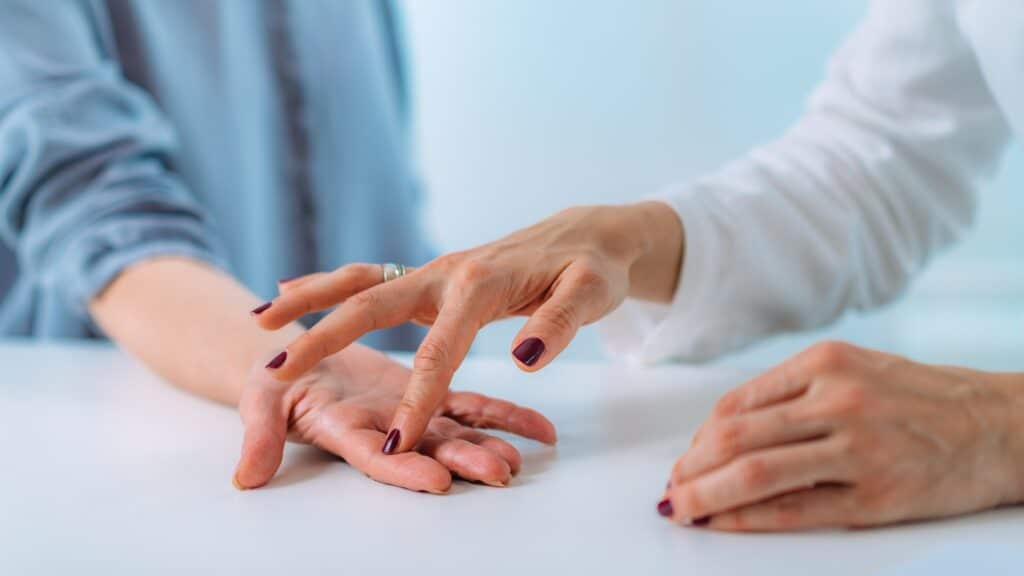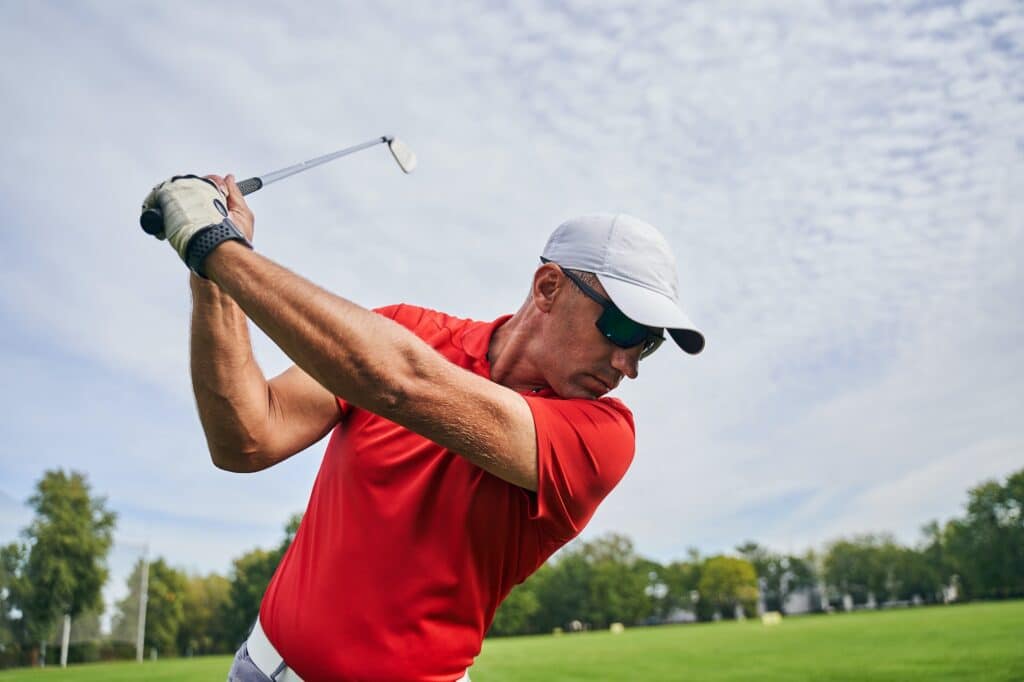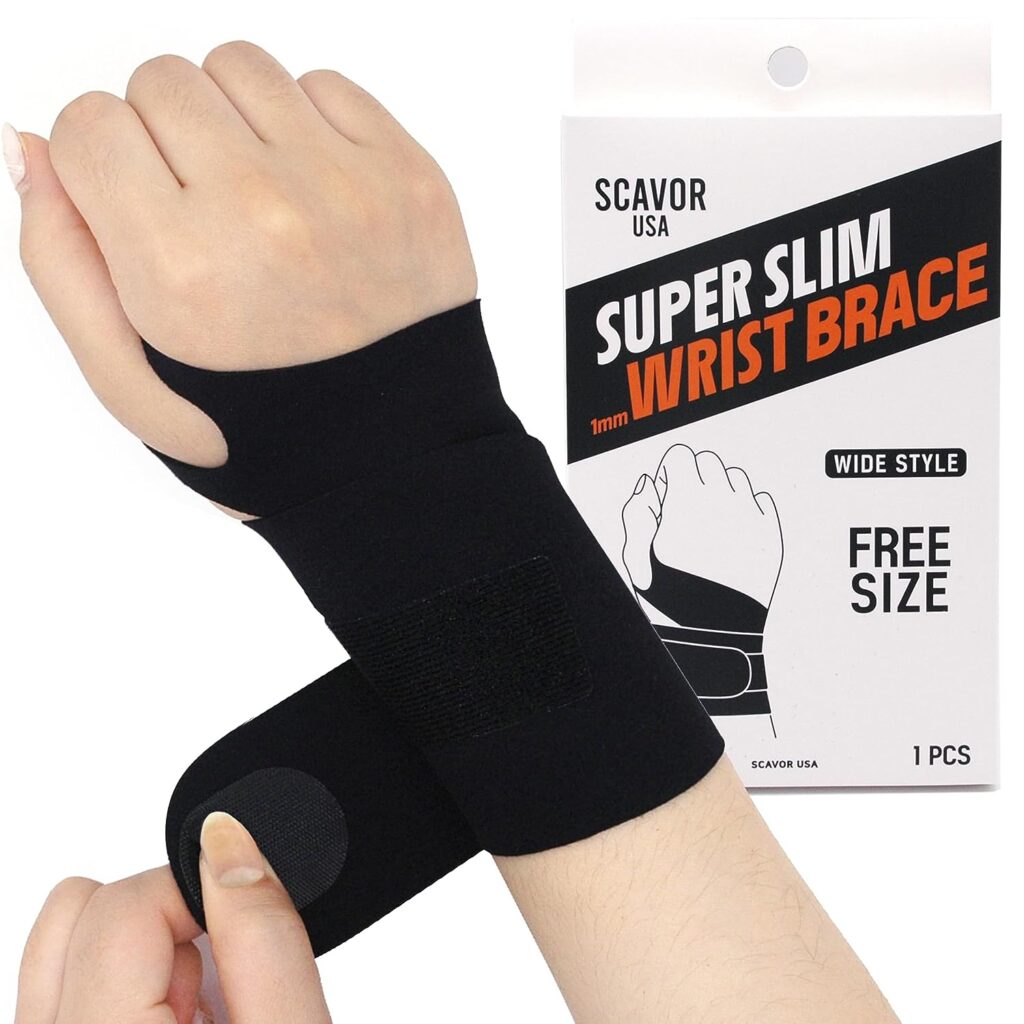Wrist pain can be a frustrating problem affecting a variety of athletes, but there’s a reason that “golfer’s wrist” is named for the sport.
This article will explore what causes golfer’s wrist, treatment options, and how to manage wrist pain with exercise so you can keep playing golf.
What is Golfer’s Wrist?
The term golfer’s wrist describes pain due to tendinitis, tendinopathy, or ligament sprain of the wrist joint. (1)
Tendinitis is a condition caused by short-term inflammation from an excessive strain of a muscle tendon due to stress or irritation. It is often accompanied by pain and swelling with movement or use of the affected muscle tendon.
Tendinopathy describes changes in the structure of the tendon from chronic irritation. This longer-term condition causes pain during movement and can alter movement patterns. A golfer with tendinopathy might notice these changes in the finer details of their golf swing. (2)
Sprains occur when a ligament becomes overstretched. Wrist sprains tend to happen during a sudden ligament strain, resulting in reduced wrist joint stability.
A sprained wrist can occur after a fall or an aggressive swinging motion with a golf club. Repetitive motion with reduced stability will lead to increased irritation at the wrist.
These conditions can make golf and similar sports uncomfortable or even painful.
Note: Golfer’s wrist is a different condition than golfer’s elbow—another common golf injury affecting the elbow’s tendons. However, these conditions may co-occur due to repetitive stress at the elbow and wrist during golfing or other sports activities.

Causes of Golfer’s Wrist
Like many other common sports injuries, golfer’s wrist is considered a repetitive stress injury or the overloading of tissues. In this case, “overuse” of the wrist results in any combination of wrist tendinitis, tendinopathy, or sprain.
But how exactly does this happen?
When swinging a golf club or a tennis racquet, most of the motion comes from the shoulder and the elbow. The wrist joint is also heavily involved and is subject to high force with each swing. During the high-powered drive of a professional golfer, the wrist provides the final phase of power to hit the ball. This increased force against the small muscles and tendons of the wrist places them at a greater risk of injury. (3)
Golfer’s wrist can also develop from sports, exercise, or manual work. For example, similar symptoms may develop due to overloading of the wrist during weight training. Similarly, workers performing repetitive tasks such as carrying or hammering may also be at risk due to repetitive stress on the smaller muscles of the wrist.

How to Treat Golfer’s Wrist
There are many effective treatments available for golfer’s wrist.
Commonly, your doctor will recommend physical therapy. A physiotherapist will offer exercises to strengthen your wrist safely to be better prepared for daily activities or sports. They will also recommend techniques to limit stress on your wrist during your everyday activities to accelerate the healing process.
Sometimes, a PT may offer manual therapy to reduce pain and improve exercise tolerance, and magnetic resonance imaging (MRI) may be ordered to ensure a proper diagnosis.

A brace or splint may be suggested to prevent irritation of your wrist injury, typically worn for several weeks, depending on the severity of your symptoms.
OUR RECOMMENDATION
“But what about my tee time?!“
For complete healing, it takes rest. Most braces and splints eliminate movement completely to facilitate this. However, if you absolutely have to get on the course, that becomes a problem. Physical Therapist Alex Goldenring PT, DPT recommends this brace in these situations. “I’d suggest SCAVOR’s Slim Wrist Brace, which adds a bit of compression/stabilization but shouldn’t limit function significantly.”
Our recommendations are the same items we trust and prescribe to patients. When you buy through links like this on our site, we may earn an affiliate commission to support new content.
Your doctor may also prescribe pain medication to address persistent pain and discomfort. Similarly, nonsteroidal anti-inflammatory medications (NSAIDs) can help to reduce inflammation and swelling. Many topical creams and patches are available over the counter to help manage pain or swelling, as well as rest and physical therapy.
While mild cases of golfer’s wrist respond well to these options, stubborn cases may benefit from injection therapy. Steroid or cortisone injections can effectively reduce joint inflammation for a variable time. For some golfers, injections can help increase tolerance while regaining confidence during sports and daily activities.

Prevention Tips for Preventing Golf Injuries
As with many repetitive stress or overuse injuries, taking precautions can help prevent golfer’s wrist from developing in the first place. Here are some quick tips to keep your wrist pain-free. (4)
Perform a warmup routine for your wrist and elbow before participating in sports or exercise.
Work with a coach to optimize your swing technique and avoid overstressing your wrist.
Ensure that your golf club is appropriately fitted to the size of your arms.
Perform the exercises below regularly to increase the strength of your wrists.
Whether you’re a novice or a golf professional, being proactive with wrist preparation for your golf game will help reduce the chances of developing a repetitive stress injury.
Exercises for Strengthening Your Wrists
For golfers, maintaining adequate strength in the wrist and elbow muscles can be a powerful defense against the repetitive stress of swinging a club. Here are two simple strength training exercises to help prevent these common golf injuries before they happen.
Wrist Flexion and Extension With Dumbbell
Start seated with your forearm resting on a table and your hand hanging off the edge, holding a dumbbell, with your palm either up or down. Use a challenging weight, but with which you can complete ten repetitions.
Slowly bend your wrist toward the ceiling, pause, then slowly return to the starting position and repeat.
Move slowly for 10 repetitions and perform for three sets in both palms-up (flexion) and palms-down (extension) positions.
Wrist Pronation and Supination With a Hammer
Start seated with your arm supported on a table at your side, and hammer in your hand with your palm facing down. Keep the heavy end of the hammer in the thumb side of your grip.
Slowly rotate the thumb side of your hand away from your body until the hammer is parallel to the floor. Pause briefly, then slowly return to the starting position.
Use a challenging weight to move slowly for ten repetitions in both directions.
Although these wrist-strengthening exercises are safe for most people, we recommend consulting your doctor before changing your physical activity or participating in a new exercise program.
Summary
- Golfer’s wrist is characterized by pain due to tendinitis, tendinopathy, or ligament sprain of the wrist joint, typically arising from excessive strain or repetitive stress seen in sports like golf.
- This condition, distinct from golfer’s elbow, is usually caused by the overuse of the wrist in sports, exercise, or manual work, particularly activities involving aggressive swinging motions, placing smaller muscles and tendons at risk.
- The treatments for golfer’s wrist include physical therapy, braces or splints, pain medication, NSAIDs, and, in stubborn cases, injection therapy, with rest being crucial for complete healing.
- Preventive measures involve warmups before activity, optimizing swing techniques in sports, using appropriately fitted equipment, and performing regular strengthening exercises such as Wrist Flexion and Extension with Dumbbell and Wrist Pronation and Supination with a Hammer.
- Adequate wrist and elbow strength can serve as a potent defense against the stress of repetitive movements involved in sports like golf.
References
- Murray, P. M., & Cooney, W. P. (1996). Golf-induced injuries of the wrist. Clinics in sports medicine, 15(1), 85–109.
- https://pubmed.ncbi.nlm.nih.gov/8903711/
- Millar, N. L., Silbernagel, K. G., Thorborg, K., Kirwan, P. D., Galatz, L. M., Abrams, G. D., Murrell, G. A. C., McInnes, I. B., & Rodeo, S. A. (2021). Tendinopathy. Nature reviews. Disease primers, 7(1). https://doi.org/10.1038/s41572-020-00234-1
- https://pubmed.ncbi.nlm.nih.gov/33414454/
- Rodineau J. (1991). Les tendinites et ténosynovites du poignet [Tendinitis and tenosynovitis of the wrist]. La Revue du praticien, 41(26), 2699–2706.
- https://pubmed.ncbi.nlm.nih.gov/1808684/
- Hospital for Special Surgery: Tips for Protecting Your Wrist on The Golf Course
- https://www.hss.edu/golfportal/tips-for-protecting-your-wrist-on-the-golf-course.htm





